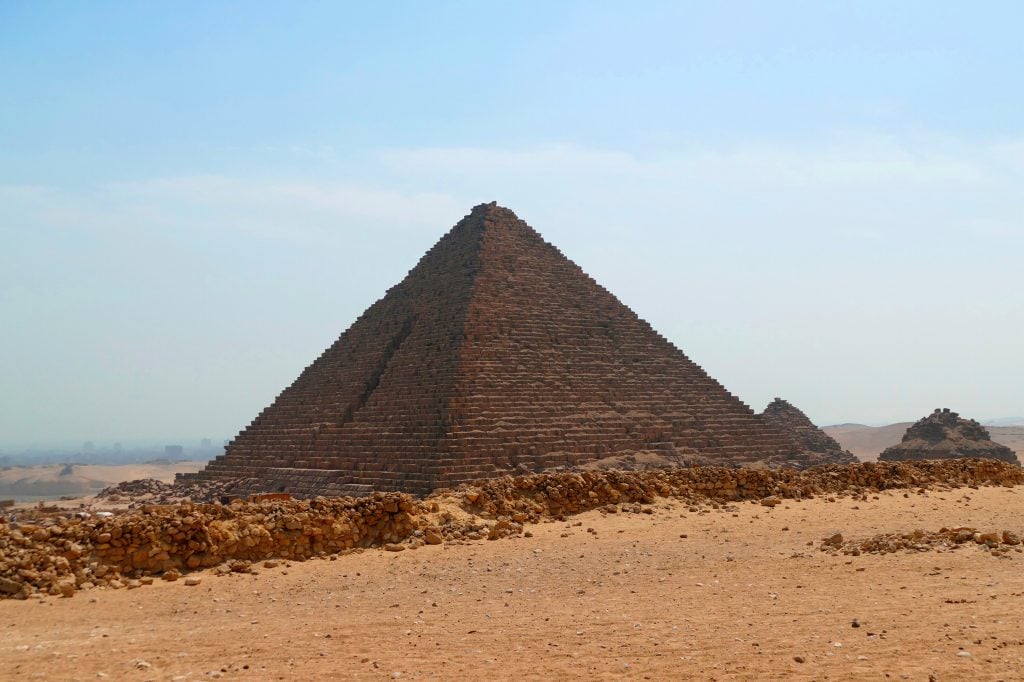Archaeology & History
Egypt’s Bid to Restore a Giza Pyramid Ignites Backlash From Archaeologists
The project aims to restore the exterior of the Menkaure pyramid.

A scheme recently unveiled to reconstruct one of the pyramids at Giza in Egypt has sparked backlash from archaeologists.
In a video on January 25, Mostafa Waziri, secretary-general of the Supreme Council of Antiquities, announced the Menkaure pyramid project. Its goal is to restore the facade of monument, which once held 16 layers of granite, by using granite blocks lying at its base. The project is slated to take about three years to complete.
The announcement has triggered criticism from social media users, who variously called the project “a sad disaster” and likened it to straightening the Tower of Pisa.
Monica Hanna, a celebrated Egyptologist, has also shared a statement on Facebook decrying the project. In it, she challenged the idea that the granite blocks at the base of the pyramid were fragments that had fallen, part of the justification used for the project. She suggested that they are not polished, meaning they were likely left behind by the pyramid’s workmen. (Some of the blocks missing from the pyramid were once used by King Ramses II to make statues and reliefs. Over the centuries, the pyramid’s other granite blocks were used to construct buildings, arsenals, and infrastructure.)
But more so, Hanna added: “The disagreement is more than methodology or application, but rather about the fundamental principles and axioms of archaeological work.”
She also blasted the “cinematic” way that Waziry announced the project. Waziri, she wrote, should have published the completed project study in a peer-reviewed international archaeological journal ahead of construction work on the pyramids rather than filming the announcement with men digging in the background. She has since shared a link for a Google Form in which fellow archaeologists can share their concerns, seemingly ahead of an open letter.
Hanna further highlighted that the work could endanger the placement of the necropolis of Memphis, which contains the pyramids plateau, on the World Heritage list. The project, she wrote, “is tantamount to tampering with Egyptian antiquities and undermining its antiquity and history.”
Waziri in his video said that the project has begun as a joint project with the Japanese government and Japanese Egyptologist Sakuji Yoshimura, whose attempt to build a pyramid in 1979 failed. The first step will be to study the stone blocks, followed by laser scanning and the reinstall of the outer cladding.
Mohamed Al-Saidi, a member of the team, indicated in a video that the idea for the project has long been in the works but cost prohibitive. He hinted at all the scientific discoveries that could be made from the project as he pushed back on assertions that authorities have not considered the scientific method or its academic value in carrying out the project.
“We as a project officially have a plan, putting all of our goals, plans, and stages in the spotlight presented to the technical committees,” he said.
Nour Badr, the head of the scientific team that documented the stones with a 3D laser, said in another video that the team used Japanese technology to create a digital model of the pyramid and the purported fallen stone blocks of the pyramid.
“We are using and reassembling the actual blocks that fell to the ground from the pyramid itself,” Badr said. “It’s being said that we’re putting in new things. Do we use materials? We use international restoration materials that have standardized specifications approved by international committees for restoration and assembly work.”





